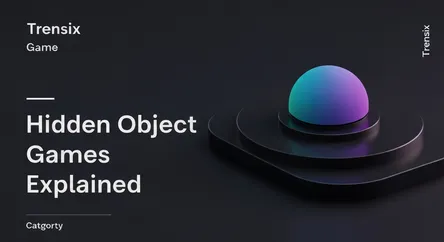Game
Hidden Object Games Explained

Discover the appeal of hidden object games. Learn what this casual puzzle genre is, why it's so popular, and its cognitive benefits.
What is it?
Hidden object games, often called "seek and find" games, are a puzzle genre where the player must find specific items from a list hidden within a cluttered scene. Played from a point-and-click perspective, they challenge a player's observation skills and attention to detail. Many modern titles, known as Hidden Object Puzzle Adventures (HOPAs), integrate these search segments into a larger narrative, combining them with adventure game elements and other mini-puzzles to create a richer, story-driven experience for players.
Why is it trending?
The genre's enduring popularity stems from its accessibility and relaxing nature. Unlike fast-paced action games, hidden object titles offer a calm experience that appeals to a broad demographic, especially casual gamers. Their simple mechanics are perfect for mobile devices, allowing for play in short bursts. The satisfaction of finding a cleverly concealed item provides a steady stream of small rewards, making the gameplay loop highly engaging. The rise of intricate storylines and high-quality art in HOPAs has also elevated the genre, attracting players seeking both a puzzle and a compelling story.
How does it affect people?
Playing hidden object games can have positive cognitive effects. They act as a mental workout, sharpening visual perception, pattern recognition, and focus. The act of scanning a complex image for specific details trains the brain to filter out irrelevant information and improve concentration. For many, the gameplay provides a form of mindful escapism, reducing stress by immersing them in a satisfying, low-pressure task. Successfully clearing a scene offers a tangible sense of accomplishment, boosting mood and providing a relaxing way to unwind.